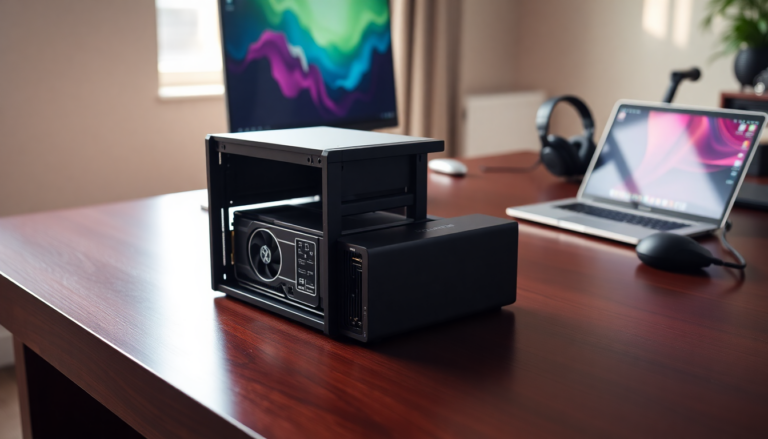Argomenti trattati
Razer has made a splash in the external GPU market with the introduction of the Core X V2, a move that’s sure to pique the interest of both enthusiasts and professionals. After a few years of relative quiet, Razer is back in the game, bringing with it a new Thunderbolt 5 external GPU enclosure. But while the specs sound impressive, many are left wondering: is it really worth the investment? Let’s take a closer look at what this new offering brings to the table, how it stands in the market, and what it means for users.
Market Overview of External GPU Solutions
The landscape of external GPUs has changed significantly, driven by rapid technological advancements and evolving user expectations. With the rollout of Thunderbolt 5, which promises lightning-fast data transfer rates, the bar has been raised for eGPU performance. However, it’s important to recognize that many users might encounter limitations that could dampen their overall experience. The Razer Core X V2 aims to be a straightforward plug-and-play solution to enhance graphics performance, but navigating its features and potential pitfalls requires some careful thought.
On the bright side, this enclosure supports full-size PCIe Gen 4 GPUs, making it compatible with the latest powerful graphics cards from the RTX 50 and Radeon RX 9000 series. This flexibility positions the Core X V2 as a potential game-changer for laptop users looking to bolster their graphics capabilities. However, it’s worth noting that the Thunderbolt connection creates a bottleneck, limiting performance to PCIe 4.0 x4 speeds, which translates to about 64Gbps. So, while Thunderbolt 5’s theoretical speeds sound remarkable, the real-world application might not quite meet the hype.
Assessing Key Features and User Experience
One significant shift in the Razer Core X V2 is the removal of several legacy features that were loved in previous models. The earlier version included handy USB ports, Ethernet connectivity, and an integrated power supply—all features that have been cut in this new iteration. Now, users must provide their own ATX power supply unit (PSU), which adds a layer of complexity and potential expense for those hoping for an all-in-one solution. This change could deter buyers who appreciated the convenience of past models.
Additionally, the lack of support for macOS and Apple Silicon devices is a glaring drawback. The Core X V2 is now geared exclusively toward Windows users and select handheld PCs that are compatible with Thunderbolt 4 or 5. Considering that many eGPU users hail from the Mac ecosystem, this limitation might reduce its appeal in a market that thrives on versatility.
Price vs. Value: Is it Worth It?
With a price tag of $349.99, the Core X V2 sits at a higher price point than its predecessor, the Core X, which debuted at $299. This price hike, coupled with the omission of features, raises a critical question: does it offer enough value? For enthusiasts and professionals who already own powerful laptops or GPUs, the Core X V2 may not come off as a wise investment.
Furthermore, when you factor in the complete Thunderbolt 5 setup, including the Core X V2 and the necessary PSU, along with the newly launched Thunderbolt 5 Dock, users could find themselves nearing the four-digit mark. This pricing strategy might segment the market, potentially alienating those who are looking for a comprehensive eGPU solution without breaking the bank.
The Razer Core X V2 exemplifies the challenges currently facing the external GPU market. While it showcases advanced specifications and the potential for enhanced performance, the removal of key features and the uptick in price leave much to be desired. As the tech world continues to evolve, manufacturers need to find the right balance between innovation and user-friendly accessibility. For now, anyone considering a purchase should carefully weigh their options, taking into account their current setup and future needs before making a commitment.

